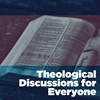The aroma was unmistakable. A hot, yeasty, full fragrance was beginning to fill the air as our small group discussed the Passover. I was awed by the idea of Jesus washing the disciples' feet and convicted by His willingness to break bread with Judas, the one who would soon betray him. Our discussion of God's provision and Jesus' obedience was passionate. The heady scent of the bread was adding to the drama unfolding on the pages in front of us. Finally, someone asked, "Is there something in the oven?" Our small group leader had placed a store-bought loaf of bread dough in the oven before anyone had arrived at the meeting. The bread had gone unnoticed during the barrier breaker and while we worshipped, but as we read and discussed Jesus breaking bread with his disciples, we were drawn deeper into the scripture by the tantalizing smell of the rising loaf. It was like we were there. After the meeting, we shared hot, thick slices of bread topped with melted butter. Since that night, every time I smell bread cooking I am reminded of the night that Jesus broke bread with his disciples and the impact it has on my life.
During the Bible study segment of your small group, draw your members into God's truth through their senses. When the senses are engaged, retention of information can rise to nearly 80%. Consider some of these ideas:
Sight - When studying John 15 (Jesus' story about the vine, the branches, and the fruit), use mud-caked fruit for prayer time. The night before the meeting, pour watered-down mud into an old ice cube tray. In each section, place a grape, making sure that the fruit cannot be seen through the murky substance. Freeze. Once frozen, place each "cube" in a separate sandwich bag. During the meeting, keep the individually packaged "cubes" in the freezer until right before the closing prayer. Before prayer time, hand each person a "cube" in a bag, and place a large glass bowl filled with warm water on a table in the center of the room. Ask the members of the group to take turns saying a short prayer of thanksgiving for God's willingness to clean the "mud" out of their lives in order that they may bear fruit. As each person finishes their prayer, ask them to place the "cube" (without the bag) into the bowl of warm water. As the "cube" melts, the fruit is released and rises to the surface of the water. One by one the cubes melt away and the fruit floats, creating a beautiful and memorable sight for any heavy heart.
Sound - Play background sounds when discussing scripture. For example, play the sound of waves when studying Peter's attempt at walking on water, a thunderstorm when looking at the disciples' frightful night in the boat on a stormy sea, or the crow of a rooster when considering Peter's three-time denial of Jesus. All these sounds, and others, can be purchased on CD or downloaded off the Internet.
Taste - Assign a different fruit to each fruit of the Spirit in Galatians 5:22. For example, use apple slices for love, pear slices for joy, grapes for peace, orange slices for patience, banana slices for kindness, watermelon chunks for goodness, and cantaloupe pieces for faithfulness. Arrange the fruit on a platter and have each person take one piece of each fruit and place it in their own paper bowl using a toothpick. As you discuss the fruits of the Spirit, have everyone taste the corresponding fruit. How are the characteristics of the food similar or different than the characteristics of that quality of living? Close your time together by asking each person to select, off the platter, the one fruit that symbolizes the fruit of the Spirit that they most need to develop. After everyone has a piece of fruit, have them eat the fruit they have selected and take turns praying that God would help them obtain that fruit of the Spirit in their life.
Touch - Hand every person in your group several small squares of sandpaper, from very rough to almost smooth. As you study the scripture lesson, ask everyone to refer to the sandpaper that best represents the "roughness" (discipline, pruning, paradigm shift, etc.) that is needed to fully realize and apply the truth being discussed.









